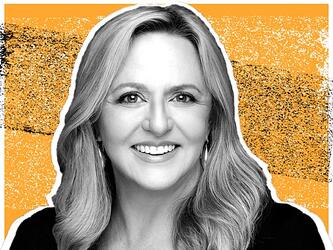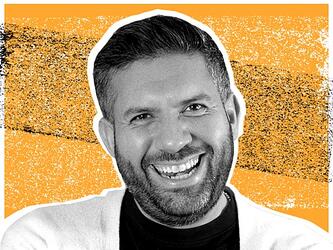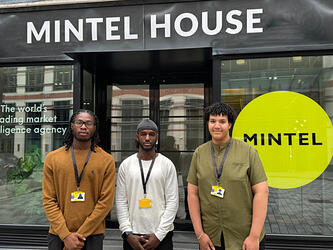Evidence in action
The NSPCC knows it can’t end child abuse alone. Its annual income of £130 million isn’t nearly enough, and only a fraction of cases of abuse are ever reported.
For this reason, the charity wants everyone to take responsibility for keeping children safe. And that means a huge part of its role is to influence others, and constantly to prove the value of its work to the many thousands of supporters, partners and volunteers who help to achieve its aims.
This means everything the NSPCC does must be supported by evidence. The woman in charge of making sure that happens is Kate Stanley, director of strategy, policy and evidence.
“Evidence has informed our strategic direction, and our strategy is both to generate and use evidence for the benefit of children, and encourage evidence-based policy-making,” says Stanley.
It’s fair to assume that the NSPCC’s work since it was founded in 1884 has played a big part in the significant declines in child abuse that Britain has seen in that period. But until recently there was little detailed evidence of the charity’s impact.
Now the NSPCC has begun tracking its progress against key measures in an annual report, and last year it published a five-year strategy including dozens of measurable targets against which it will gauge its progress.
“My role is to make sure we’re using our resources to focus on achieving the activities that will help us accomplish those outcomes,” says Stanley. It’s going well; the charity aims to reach five million children in five years, and Stanley thinks they may hit that target in just three years.
Specific targets include visiting every primary school in the country with the ‘Speak out, Stay safe’ programme, and answering 50% more calls on the charity’s helpline for adults.
Not all the measures are perfect – some are based on actions the charity will take, rather than measurable results of the impact of those actions. Stanley says: “This is step one on that journey of improving our ability to measure the impact we make. Im really proud of our progress in holding ourselves to account – I’d like to go further faster, and we’ll only know if we’re succeeding if we measure how we’re doing.”
One of the key ways evidence guides the NSPCC’s work is by assessing the relative impact of intensive and light-touch interventions. Individual social care can change the lives of a few thousand children, but an awareness campaign delivered through schools up and down the country has the potential to reach millions. Knowing what works allows the charity to strike the right balance and make the best use of its limited resources.
Stanley says: “We have an evidence team that evaluates our own services so that we know the things we’re doing are making a difference for children. It’s very easy to assume that because you’re a charity and want to do good, that you will do good. But we know that wanting to isn’t enough, and that it is possible to do harm. So we’re very assiduous in assessing the value of the work that we do and learning from that.”
The next role of evidence is to support others in helping to stop abuse. “The NSPCC has been around for 125 years and we spent a lot of those years explaining to people that abuse existed, that it was a bad thing and that there was a lot of it,” says Stanley. “People get that now. The next step is to show people how they can help. Evidence is part of how we bring people on that journey.
“We realise we can’t reach everybody, so our model of change is about testing and piloting approaches to see what works and what doesn’t, so we can then share that learning with others, that they might then take that forward and scale it up, because we know others have much greater reach than we can achieve. That model is very much dependent on achieving evidence that is persuasive and that people can use.”
Trusted source
The charity’s brand tracker, run by YouGov, has shown an increase in recent years in the number of people who believe that child abuse can be prevented, suggesting its message that everyone can help is getting through.
Key audiences include government, other charities, businesses – such as O2, which helps promote online safety – and the network of professionals the charity works with, including teachers, social workers and midwives. “They tell us that evidence and research are important to them and that we’re a trusted source,” says Stanley.
Many of the NSPCC’s behaviour change campaigns rely on parents, teachers or others to disseminate a message – for example the PANTS campaign encouraging parents to talk to young children about ‘the Underwear Rule’, that focuses on their underwear being private.
“Everyone can play their part in ending child abuse,” says Stanley, “which means that, in a sense, everybody is our audience.”
In some cases, the evidence the NSPCC would like to have simply doesn’t exist. For instance, it’s eight years since a survey of the prevalence of child sexual abuse was conducted in the UK. That was carried out by the NSPCC itself, at a cost of a £250,000, but the charity can’t afford to repeat it regularly.
“It’s a frustrating gap in knowledge, which makes it difficult to make sense of what we do know. For example, reports of children being emotionally abused have risen by 200% in the past seven years. Good news or bad? Without knowing how many cases go unreported, we can’t be certain.”
Last year, former Sheffield United footballer Andy Woodward became the first of 20 players to speak out about abuse by coaches when they were boys. A sign that people are becoming more willing to open up about past abuse? Perhaps. But how many remain silent?
“We don’t know the scale of how much more needs to be done,” says Stanley. “More reporting [of abuse] doesn’t mean there’s more of it, but it’s very difficult to make that distinction clearly because it just sounds like a geeky side issue, when it’s actually a fundamentally important point.”
The NSPCC is now calling on the government to begin regularly surveying the prevalence of sexual abuse, just as it does for other public health issues. The question is particularly important in the context of recent cuts to social care budgets, which have left services stretched. This means that, even if abuse is reported, the necessary support may not be there.
The impact of public spending cuts is a complex and highly politicised issue, says Stanley, but “there’s no question that social service departments are under massive, massive pressure. And it’s not good enough to suggest that we can reach all the children that we need to help through social services, because they simply don’t have the resources to do that.”
Recently, the NSPCC teamed up with the Economic and Social Research Council (ESRC) to fund four major projects looking at how to help abused children get back on track (see box). By pooling resources and looking at topics of common interest, this has enabled the charity to invest in major, top quality research on key issues, with £1 million contributed by the NSPCC and £700,000 by the ESRC.
Academics were invited to propose ways of addressing three “deceptively simple” questions, says Stanley: “which children need help, what support they need, and what works to help them”.
New technology
The projects that have been funded use a variety of methods, ranging from randomised, controlled trials of therapy treatments, to analysis of data from an existing longitudinal study. One study is even using brain imaging to look for clues as to how abuse triggers later mental health problems – a sign of how the NSPCC’s research activities are changing. “There have been some massive advances in science in recent years,” says Stanley, “and if we’re not deploying those advances for our children, then we’re really missing something. We shouldn’t be the poor relations of advances in data science or cognitive sciences.”
The charity is also looking into how new technology could allow it to extract more insight from calls to its helplines – without compromising anonymity. “I think we’re at a really interesting time in terms of being able to use what we learn from the contacts we have on both our helpline for adults and Childline,” says Stanley.
Calls to Childline are never recorded, but the text of emails could be analysed to produce anonymous, aggregated data. The NSPCC is considering how it could use this technology to get a clearer overall picture of subjects, themes and trends, while protecting anonymity.
How the NSPCC handles sensitive personal data for research is overseen by its research ethics committee, made up of independent experts, as well as an information governance committee who deals with broader issues involving data.
The changing legal context is also having an impact on how the NSPCC’s research is done. “How we connect with our supporters has changed dramatically in the past couple of years, and will further, because of changes to the legal guidance,” says Stanley.
The European Union’s new General Data Protection Regulation (GDPR), set to come into effect in the UK in May 2018, will be “a radical change” because “it requires people to actively want to hear from us. It means it’s really important for us to be engaging people in a way that they actively want to engage with us.”
Challenges like these make measuring impact hard, Stanley says, “but that doesn’t mean we shouldn’t do it”. In this area, she believes, the charity sector has too often “let the perfect be the enemy of the good”. “We say, it’s really hard, so we won’t do it. We expect people to just trust us. At the NSPCC we’ve said, that’s not enough, this matters too much to leave it to instinct. It’s better to attempt and get an imperfect measure of your impact than just to say, we think this works.
“It’s difficult to measure social change, it can be quite off-putting and daunting, and it involves quite a lot of time and energy and resource to get it right. We’ve taken a decision, we think that’s an important investment because we want to be confident that we’re spending our donors’ resources on things that make the most difference. We think we’ve got a strong story to tell about the difference we can make.”

We hope you enjoyed this article.
Research Live is published by MRS.
The Market Research Society (MRS) exists to promote and protect the research sector, showcasing how research delivers impact for businesses and government.
Members of MRS enjoy many benefits including tailoured policy guidance, discounts on training and conferences, and access to member-only content.
For example, there's an archive of winning case studies from over a decade of MRS Awards.
Find out more about the benefits of joining MRS here.












0 Comments